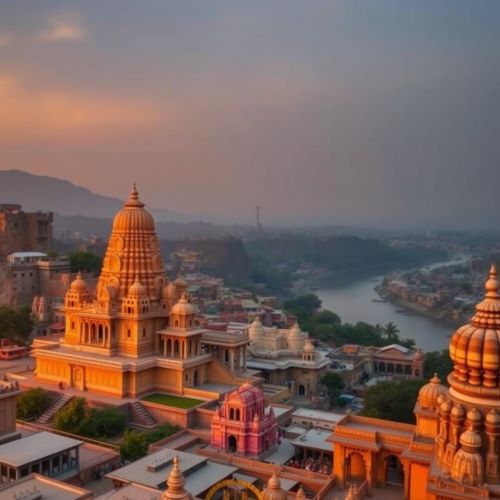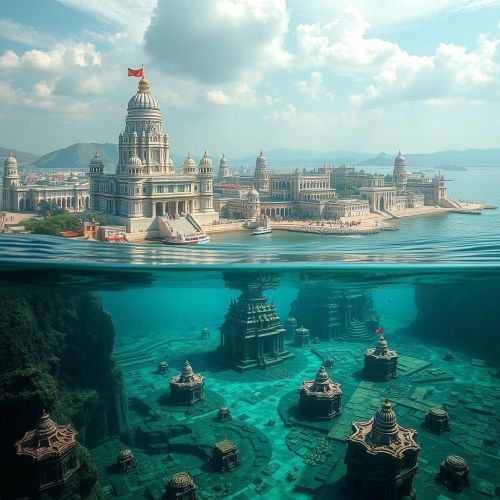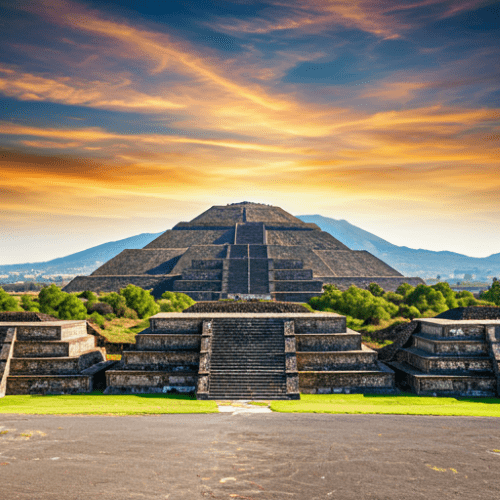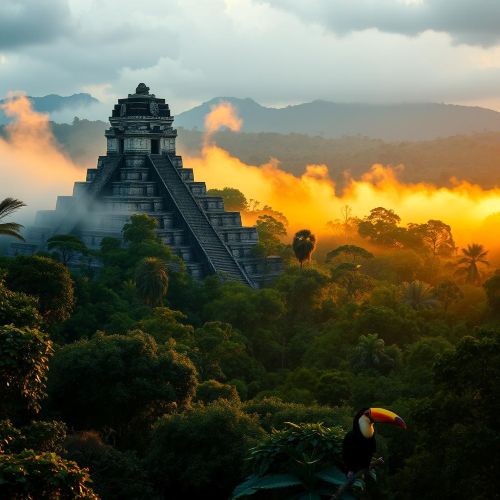Varanasi : The Eternal City
At a glance
| Description | |
|---|---|
| Mythology | Indian Mythology |
| Country | India |
| Closest airport | Lal Bahadur Shastri International Airport (VNS) |
| Type | Constructed |
| Accessibility | 10/10 |
Introduction
Varanasi, often referred to as Kashi or Banaras, is one of the most spiritually vibrant cities in the world. Situated on the banks of the Ganges River in Uttar Pradesh, this ancient city is considered the beating heart of Hindu spirituality and devotion. Known as the “City of Light,” Varanasi has stood as a beacon of sacredness for thousands of years. The city’s atmosphere—steeped in devotion, rituals, and history—offers visitors a powerful connection to India’s timeless cultural and religious identity. Varanasi is not just a place—it is an experience that transcends time, where tradition and devotion merge in daily life.
Connection with Mythology
The mythological significance of Varanasi is woven into its very soil. It is believed that Lord Shiva himself established this city, making it his chosen abode on Earth. This divine origin story grants Varanasi an unparalleled spiritual status. Legends speak of the city as being founded when Shiva placed his trident on the ground, marking it as a space of divine permanence. The Kashi Vishwanath Temple, one of the most revered Jyotirlingas, commemorates this divine presence.
The Ganges, flowing through Varanasi, is not merely a river but a celestial being in Hindu belief, descended to Earth through the matted locks of Shiva. This myth endows the river with a purifying power, making its waters vital for religious rituals. The story of the eternal flame at Manikarnika Ghat—where it’s believed Lord Vishnu dug a pit and Shiva dropped an earring—adds another layer of spiritual gravity. Varanasi’s role in epics like the Ramayana and Mahabharata further solidifies its place as a divine city, where gods and sages once walked, meditated, and guided humanity.
Ways to Get There
Reaching Varanasi is relatively straightforward, thanks to its well-developed transportation network. By air, the Lal Bahadur Shastri International Airport connects the city with major metros like Delhi, Mumbai, Kolkata, and Bengaluru. International connections are available, though often via layovers. The airport lies about 26 kilometers from the city center and is serviced by taxis, app-based cabs, and buses.
Train travel remains one of the most popular ways to reach Varanasi. The Varanasi Junction, alongside other stations like Kashi and Mughal Sarai, provides excellent rail connectivity with cities across India. Many trains run daily, offering various classes to suit different budgets. On arrival, local transportation like auto-rickshaws and e-rickshaws make it easy to navigate the inner city.
For those preferring road travel, a network of national highways links Varanasi to nearby cities like Allahabad, Patna, Lucknow, and Gorakhpur. Interstate and private buses, as well as rental car options, make road trips convenient and flexible. While water transport isn’t used for long distances, boat rides along the Ganges remain a central experience within the city.
What to Look For
Exploring Varanasi is like walking through a living museum of devotion, artistry, and ancient customs. The ghats along the Ganges are the city’s spiritual heart. Dashashwamedh Ghat hosts the grand Ganga Aarti every evening, a visual spectacle of flames, chants, and devotion. Manikarnika Ghat, in contrast, reflects the city’s view of death as a passage to liberation, where cremations happen around the clock.
Temples are omnipresent in Varanasi. The Kashi Vishwanath Temple stands out for its sanctity and history, while the Sankat Mochan Hanuman Temple and Tulsi Manas Temple offer serene settings for devotion. The Durga Temple’s vibrant red façade and intricate design are also worth a visit.
Sarnath, just a short drive away, is a cornerstone of Buddhist history, where Lord Buddha delivered his first sermon. Its peaceful gardens and ancient ruins offer a tranquil break from the city’s intensity.
Markets like Vishwanath Gali bustle with vendors selling religious paraphernalia, silks, and street food. Witnessing the craftsmanship behind Banarasi sarees, known for their luxurious silk and fine embroidery, is a cultural experience in itself. Varanasi’s culinary offerings—from spicy tamatar chaat to cooling lassi and the iconic paan—bring a sensory depth to any visit.
Need a place to stay? Book your hotel room now!
Importance in cultural history
Varanasi’s role in shaping Indian cultural identity is profound. Its origins stretch deep into the ancient Vedic period, with mentions in scriptures like the Rigveda and Atharvaveda. Over centuries, it has grown into a sanctuary for scholars, poets, and spiritual leaders.
The city is the birthplace of classical Hindustani music and home to musical legends like Ustad Bismillah Khan. The Benares Gharana, a prominent musical school, has greatly influenced Indian music. Kathak dance also flourished here, rooted in devotional storytelling through movement.
Literature thrives in Varanasi. Poet-saint Kabir’s spiritual verses were born here, and Tulsidas wrote the Ramcharitmanas, retelling the Ramayana in vernacular Hindi, making it accessible to the masses. These contributions continue to echo in spiritual and literary circles across India.
Artisans of Varanasi are also keepers of tradition. Beyond weaving, they craft brass sculptures, wooden toys, and paintings inspired by mythological themes. These works serve as both livelihood and legacy, passed down through generations.
Education and knowledge remain central to Varanasi’s ethos. Banaras Hindu University, founded in 1916, stands as one of Asia’s largest and most prestigious centers for learning, blending traditional wisdom with modern education. It attracts scholars from across India and the world, continuing the city’s reputation as a crucible of knowledge.
Best time to travel
The best months to experience Varanasi are from October to March. During this time, temperatures are cooler and ideal for exploring the city’s spiritual and historical landmarks.
Winter months see the celebration of key festivals like Dev Deepawali, when thousands of oil lamps light up the ghats, creating an ethereal glow along the Ganges. Maha Shivratri draws massive crowds to the Kashi Vishwanath Temple in reverence of Lord Shiva, while Makar Sankranti fills the sky with kites and the river with pilgrims.
Visiting in summer, particularly from April to June, is challenging due to high temperatures, often exceeding 40°C. However, this off-season period offers lower prices and fewer crowds. Early morning boat rides and temple visits remain manageable even in the heat.
Monsoon, from July to September, brings lush greenery and a certain romance to the city, though heavy rains may limit mobility around the ghats. Despite the weather, Varanasi’s spiritual atmosphere remains constant, often more pronounced in the quiet of the rainy season.
In essence, Varanasi is not just a destination; it’s an immersion into India’s spiritual consciousness. Whether you’re drawn by myth, history, culture, or faith, the city offers a deeply transformative journey that continues to resonate long after you’ve left its sacred shores.
Source
Holidify. (n.d.). How to reach Varanasi. Retrieved from https://www.holidify.com/places/varanasi/how-to-reach.html
Travelogy India. (n.d.). How to reach Varanasi. Retrieved from https://www.travelogyindia.com/varanasi/how-to-reach-varanasi.html
Temple Yatri. (n.d.). History and Legends of Varanasi. Retrieved from https://templeyatri.in/information/varanasi-travel-guide/history-and-legends-of-varanasi/
India.com. (2025). Explore the hidden stories behind Varanasi’s local legends. Retrieved from https://travel.india.com/guide/destination/explore-the-hidden-stories-behind-varanasis-local-legends-7662678/
Varanasipedia. (2023). The importance of Varanasi in Indian mythology. Retrieved from https://varanasipedia.com/spirituality/the-importance-of-varanasi-in-indian-mythology/
Holidify. (n.d.). Best time to visit Varanasi. Retrieved from https://www.holidify.com/places/varanasi/best-time-to-visit.html
TripCosmos. (2025). Best time to visit Varanasi: Month-by-month guide. Retrieved from https://tripcosmos.co/best-time-to-visit-varanasi/
Pincodify. (2025). Best time to visit Varanasi: A complete guide. Retrieved from https://www.pincodify.com/blog/varanasi-guide/best-time-to-visit-varanasi
Incredible India. (n.d.). 7 riveting tales of Varanasi. Retrieved from https://www.incredibleindia.gov.in/en/uttar-pradesh/varanasi/let-us-walk-in-varanasi-for-7-riveting-stories
Indian Culture. (n.d.). Varanasi. Retrieved from https://indianculture.gov.in/node/2790202
Frequently Asked Questions
Lorem ipsum dolor sit amet, consectetur adipiscing?
Lorem ipsum dolor sit amet, consectetur adipiscing elit. Praesent convallis vestibulum justo, ac tincidunt nunc vehicula quis. Nullam id dolor quis orci malesuada feugiat. Curabitur aliquet libero at urna ullamcorper, ac ultricies nulla dapibus.
Lorem ipsum dolor sit amet, consectetur adipiscing?
Lorem ipsum dolor sit amet, consectetur adipiscing elit. Praesent convallis vestibulum justo, ac tincidunt nunc vehicula quis. Nullam id dolor quis orci malesuada feugiat. Curabitur aliquet libero at urna ullamcorper, ac ultricies nulla dapibus.
Lorem ipsum dolor sit amet, consectetur adipiscing?
Lorem ipsum dolor sit amet, consectetur adipiscing elit. Praesent convallis vestibulum justo, ac tincidunt nunc vehicula quis. Nullam id dolor quis orci malesuada feugiat. Curabitur aliquet libero at urna ullamcorper, ac ultricies nulla dapibus.
Lorem ipsum dolor sit amet, consectetur adipiscing?
Lorem ipsum dolor sit amet, consectetur adipiscing elit. Praesent convallis vestibulum justo, ac tincidunt nunc vehicula quis. Nullam id dolor quis orci malesuada feugiat. Curabitur aliquet libero at urna ullamcorper, ac ultricies nulla dapibus.
Lorem ipsum dolor sit amet, consectetur adipiscing?
Lorem ipsum dolor sit amet, consectetur adipiscing elit. Praesent convallis vestibulum justo, ac tincidunt nunc vehicula quis. Nullam id dolor quis orci malesuada feugiat. Curabitur aliquet libero at urna ullamcorper, ac ultricies nulla dapibus.









